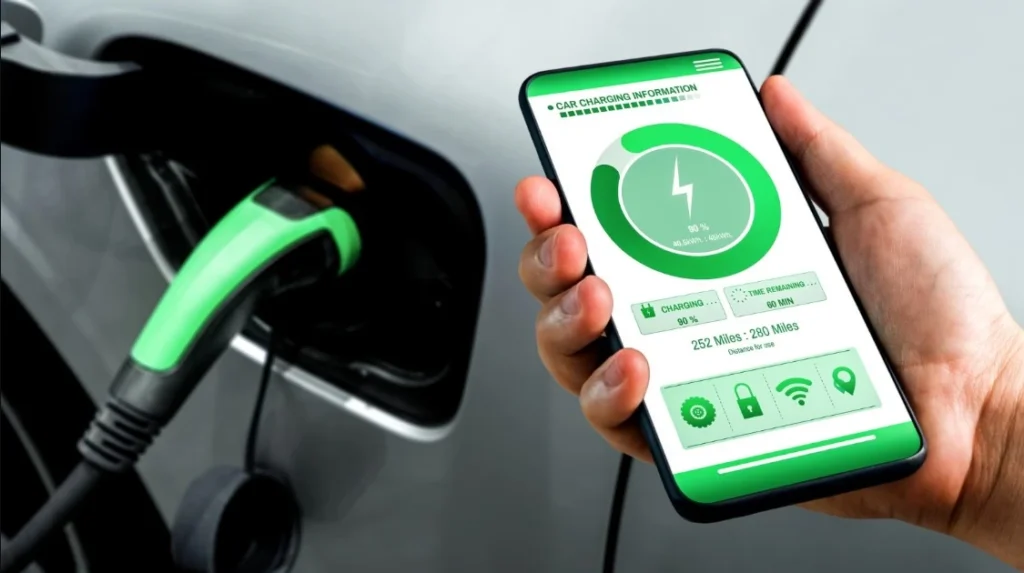Qatar Supercharges EV Adoption: Qatar’s commitment to sustainable transport gets a boost with over 300 high-speed EV chargers offering 80% charge in under 30 minutes. Learn how this initiative supports Qatar National Vision 2030 and accelerates the transition to electric vehicles.
EV charging, Qatar, sustainable transport, electric vehicles, fast chargers, Vision 2030
Qatar’s Electric Dream: 300+ Fast Chargers Powering a Sustainable Future
Qatar has cemented its position as a leader in sustainable transportation by deploying a network of over 300 high-speed electric vehicle (EV) chargers across the nation. This significant milestone, achieved as of August 1, 2025, is a key component of Qatar National Vision 2030, which emphasizes eco-friendly solutions and a substantial reduction in carbon emissions. These cutting-edge DC fast chargers can replenish an EV’s battery to 80% in under 30 minutes, significantly enhancing convenience and driving broader EV adoption.

Kahramaa: Empowering EV Drivers Through Innovation and Engagement
The Qatar General Electricity and Water Corporation (Kahramaa) proudly announced this achievement during a community event at the Kahramaa Awareness Park in Al Thumama. The event brought together engineers and EV owners to assess the performance and user-friendliness of the current charging infrastructure and discuss future expansion plans. A key highlight was the launch of a new mobile application designed to provide real-time charging session updates, enable issue reporting, and foster transparency, giving EV drivers greater control over their charging experience. Kahramaa emphasized the importance of public feedback in shaping the future of Qatar’s EV ecosystem.
Understanding the Power of Fast Charging
Qatar Supercharges EV Adoption: Electric vehicle chargers, or electric vehicle supply equipment (EVSE), are broadly categorized into AC (Alternating Current) and DC (Direct Current) fast chargers. AC chargers, encompassing Level 1 and 2, deliver electricity that the vehicle’s internal system converts before charging the battery. These are generally slower and better suited for homes or workplaces. DC fast chargers, on the other hand, bypass the onboard converter and deliver power directly to the battery, enabling significantly faster charging times with outputs ranging from 50 kW to over 350 kW.
Qatar’s newly installed chargers are Level 3 DC fast chargers, strategically located at malls, public parking areas, and major roadways, enabling rapid charging on the go.
Driving Towards Vision 2030: The Impact of Expanded EV Infrastructure
This expansion of Qatar’s charging infrastructure directly supports the nation’s Vision 2030 goals, which prioritize energy diversification, greenhouse gas emission reduction, and the promotion of sustainable transport. The widespread availability of fast DC chargers tackles “range anxiety”—a major obstacle to EV adoption—by ensuring reliable and convenient access to quick charging, particularly crucial for apartment dwellers and those in urban areas.
Furthermore, Kahramaa’s approach integrates smart technology and community engagement to optimize the charging network. The accompanying mobile app facilitates monitoring and feedback collection, ensuring continuous improvement based on user experience.
The Global Landscape of EV Charging: Standards and Challenges
Globally, EVSE systems accommodate various connector standards, including CCS (Combined Charging System), CHAdeMO, Type 2, and Tesla’s proprietary plugs. Advanced chargers increasingly incorporate smart features such as grid load management, scheduled off-peak charging, and real-time diagnostics—essential for a robust and efficient EV ecosystem. Despite rapid advancements, challenges remain in standardizing connectors and ensuring equitable access, particularly for residents in multi-unit housing, an issue Qatar is actively addressing in its ongoing infrastructure planning.
The Road Ahead: Qatar’s EV Network of the Future
Qatar plans to further expand its fast charger network across residential areas, commercial centers, and public parking facilities to meet the rising demand driven by increasing EV adoption. Future enhancements are likely to include seamless payment and scheduling functionalities, potentially adopting Plug & Charge standards like ISO 15118 for automated billing and authentication. Strategic grid management will be crucial as ultra-fast chargers become more common, ensuring that rapid charging doesn’t compromise energy sustainability or grid stability.
Qatar’s achievement of deploying over 300 fast EV chargers marks a transformative step towards widespread transport electrification within the framework of Vision 2030. By combining rapid charging technology, user-centric digital tools, and a commitment to expanding access, Qatar is accelerating its transition to a cleaner and greener transportation future.